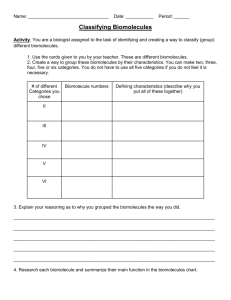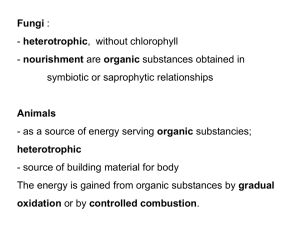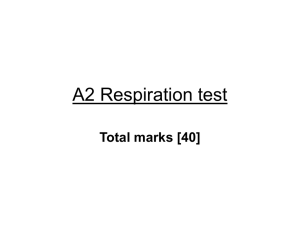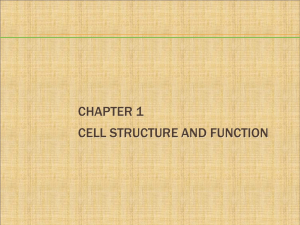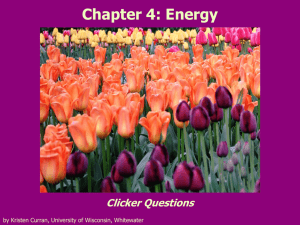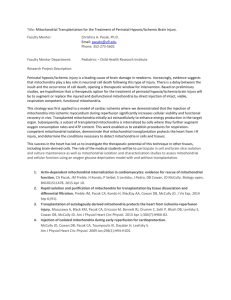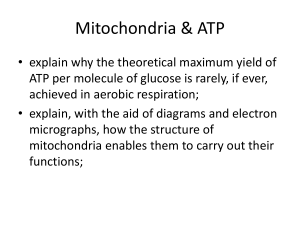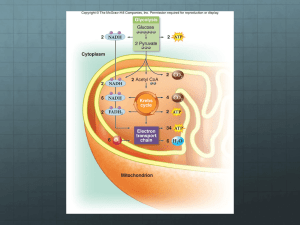Bioenergetics Talk for Schools
advertisement
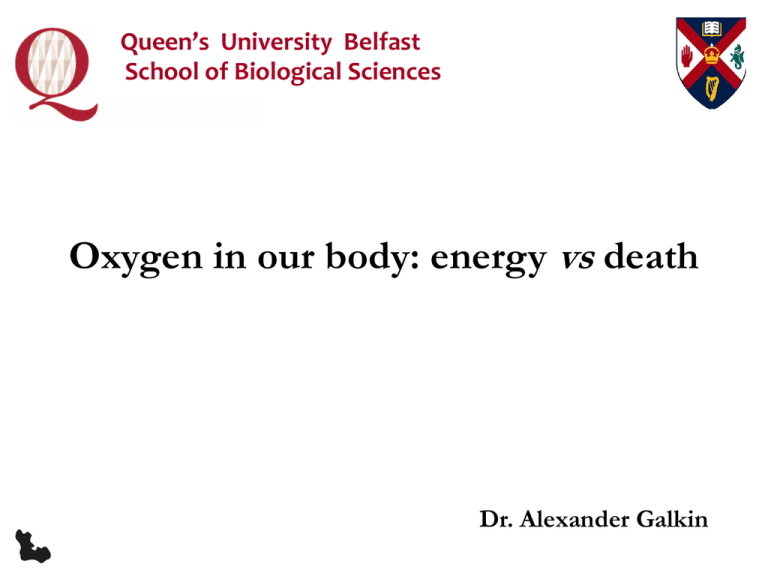
Queen’s University Belfast School of Biological Sciences Oxygen in our body: energy vs death Dr. Alexander Galkin Joseph Priestley Discovery of oxygen 1774-1779 He found that a mouse kept with a plant would survive. These kinds of observations led Priestley to offer an interesting hypothesis that plants restore to the air whatever breathing animals and burning candles remove - what was later coined by Lavoisier "oxygen". Energy and oxygen Sun Energy CO2 + H2O Animals Plants Sugar + O2 Body Energy What is happening with oxygen? Animals O2 + 4e- + 4H+ 2H2O Plants Oxygen molecules are being reduced by our body into water (O2 accept electrons) Plants are able to oxidise water molecules and release O2 (H2O loses electrons) RESPIRATION PHOTOSYNTHESIS Where is it happening? Adult consumes around 380 litres of O2 each day (top athletes can sustain 10 times greater rate) Cell Mitochondria 90-99% of oxygen we breath in is consumed by mitochondria ~1015 mitochondria in our body ~ 10% of the body weight Mitochondria contains its own DNA and probably are result of a symbiosis Tracking mitochondria (red) and cytoskeleton (green) http://www.youtube.com/watch?v=N51QgkRI26I How is energy generated? ATP is regarded as a universal source of energy occurring in all cell types. In animals it is produced during the degradation of foodstuff. ADP + Pi Foodstuff (Glucose, fat, proteins) energy work ATP ATP is formed and hydrolysed at a rate of around 91020 molecules per second, equivalent to a turnover rate of ATP of 65 kg per day Muscle work Thinking Tissue growth DNA synthesis Cell division Respiratory chain couples oxygen consumption with ATP synthesis Foodstuff WORK AH2 A H+ ADP+P H+ e Inner Membrane e Respiratory chain H+ H+ + H + H H+ ATP ATPsynthase O2+H+ H+ H2O H+ H+ H+ Mitochondria are main source of energy production in a cell Most likely mitochondria are responsible for production of 90% of our ATP. Inner mitochondrial membrane ~1400m2 During respiration in mitochondria oxygen undergoes 4-electron reduction: O2 + 4e- + 4H+ but... 2H2O Reactive oxygen species (ROS) One electron reduction of molecular oxygen O2 + 1e- O2- Superoxide radical (photochemistry or biological systems) Dismutation of superoxide radical O2- + O2- + 2H+ H2O2 Hydrogen peroxide (hair lightening) Transition metal ions catalyse Fenton reaction Fe2+ + H2O2 Fe3+ + OH- + OH Hydroxyl radicals (house bleach) Small fraction of electrons can “leak” from the respiratory chain Some of oxygen molecules can be reduced by less than 4 electrons and form “free oxygen radicals” or reactive oxygen species (ROS) – these molecules urgently want to accept or to release electrons to go to the low energy state they are highly reactive and can interact with other molecules in a cell – proteins, DNA and membrane lipids. Sources of ROS •Enzymatic = leak from mitochondria and other systems •Toxic compounds (paraquat, sulfa drugs, antimalarial drugs) = these can be called “pro-oxidants” •Smoking •Ionising radiation and UV Why mitochondria killed us in the end? Mitochondrial free radicals theory of ageing Mitochondria make ROS as a byproduct of enery metabolism ROS damage mitochondrial DNA More mutations occure Proteins encoded in mtDNA cannot perform their functions anymore Mitochondria cannot produce enough energy Energy crisis and DEATH How to change the situation? Molecules that can scavenge ROS are called antioxidants (found in fruits and vegetables). Caloric restriction after 40 yo – the less electrons are going through the mitochondria, the less leak would happen. Physical exercises strongly stimulate natural mechanisms of ROS detoxification Ugly exception: Naked rat mole Naked mole rats live ~30 years (not 3-4 years as other rodents) They are mammals but their temperature is not constant Has only 100 hairs Underground colonies are organized like an insect community around a single breeding queen and workers and soldiers. Ugly exception: Naked rat mole More stuff and bioenergetics links http://www.qub.ac.uk/bb/Staff/DrAGalkin/
